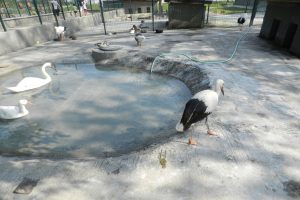

The school was founded in the Obedeanu Church chapels, built by the great landowner Constantin Obedeanu.
Constantin Obedeanu’s son dedicated the church built by his father to Bishop Grigorie al Râmnicului Noului Severin. Afterwards, here was where the first school in Craiova, with one Slavic and one Greek teacher. This school of the Obedeanu Church from 1774 to 1775 was the first school in Oltenia. The school was mentioned for the first time in a document from April 26th 1775 by Alexandru Ipsilanti. It was for 100 years, the only elementary school in Craiova and the second national school in Romanian in Wallachia.
In 1803, the public school from the Obedeanu Monastery in Craiova was recognized and organized as a school for the landowners’ sons, as well of others of “bright cheeks, who have he will and love knowledge”.
Thusly organized, the school functioned, with some interruptions from 1816 to August 1821. After Tudor Vladimirescu’s revolution in 1821 and the naming of King Grigore Dimitrie Ghica as local king, he decided, by the sultan’s orders, to abolish Greek schools. As such, the school in the Obedeanu Church became in 1822 a public school named the Royal School, with a primary class and superior classes, where the youth from Craiova learned Romanian, French and Greek. In the spring of 1825, teachers Stanciu Căpățâneanu and Grigore Pleșoianu, students of Gheorghe Lazăr and I. H. Rădulescu, founded in the Obedeanu church The Romanian Language National School, whose name will be tied to the entire evolution of education in Craiova.
Between 1826 and 1832, due to the building’s ruin and the social-political conditions of that time, when the local militia occupied the building, the school functioned with lengthy interruptions. In 1832, under the care of Stanciu Căpățâneanu, Grigore Pleșoianu and Florian Aron, the 3rd grade of the school together with the humanistic classes (future gymnasium) temporarily moved to the church Madona Dudu chapels and the first and 2nd grades kept functioning in the school in the Obedeanu church courtyard.
At the Obedeanu Church there wasn’t just a school, but also from its great incomes there were rooms built inside and around the courtyard where the schools’ teachers lived, doctors and “other bright cheeks” (asylum).
The buildings’ ruin lead in time to their demolition, on the grounds of the buildings and former chapels near the Obedeanu Church to be raised: the “Obedeanu” School for boys and the “Zoița Brâncoveanu” School for Girls.
According to the Obedeanu Church history, there was a building between the two schools built in 1900 purposed as a school public house.
The separating wall between the church and the school was raised in 1968 at the school’s initiative. The thing to remember is that of all that was once the Obedeanu settlement, today only the church and a part of the wall surrounding the school on the west side and north one, exist.
In this school many important figures have studied through time like: Tudor Vladimirescu, Petrache Poenaru, Gheorghe Chițu, Theodor Aman, Alexandru Macedonski, Eugeniu Carada, Constantin Argetoianu, Gogu Constantinescu, Nicolae Titulescu, dr. Constantin Angelescu, Constantin Nicolăescu-Plopșor etc.





